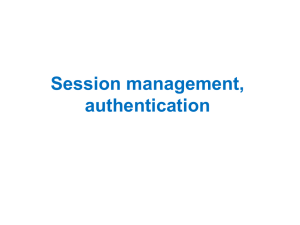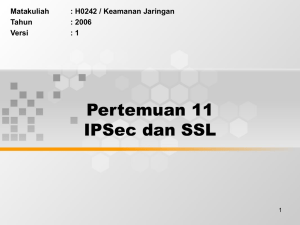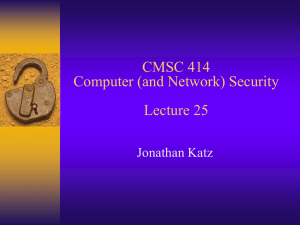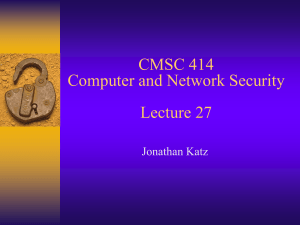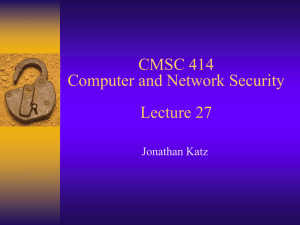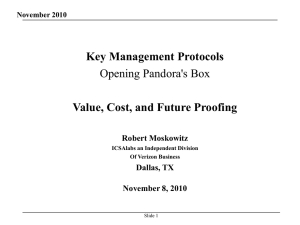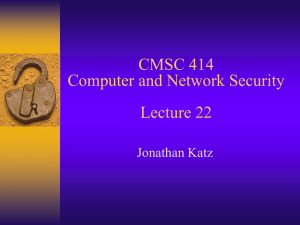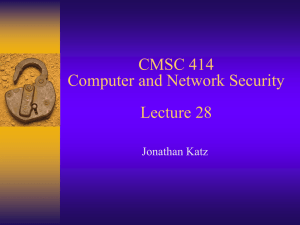Internet Security CS457 Seminar Zhao Cheng
advertisement
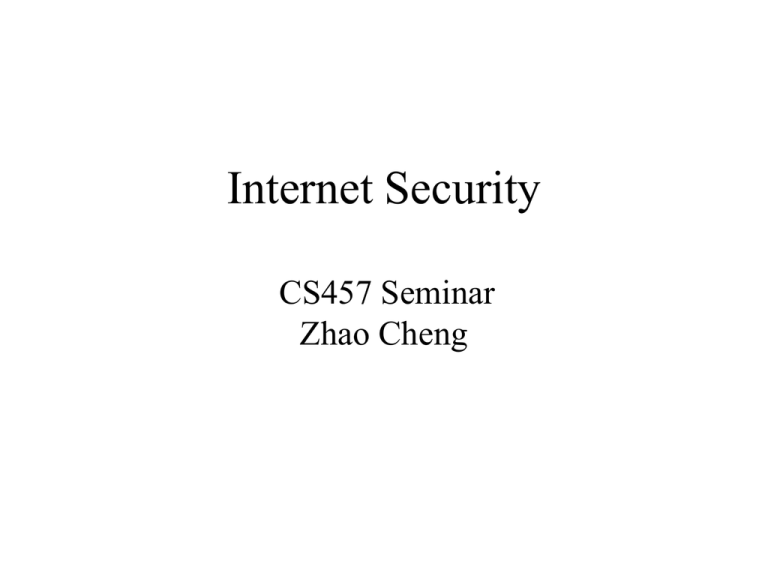
Internet Security CS457 Seminar Zhao Cheng Security attacks • interruption, interception, modification, fabrication • passive attack, active attack Security services • • • • Confidentiality Authentication Integrity Nonrepudiation IPSec services SA(Security Association): one way relationship, identified by • SPI(Security Parameter Index). • IP Destination Address. • Security Protocol Identifier: AH(authentication Header) ESP(Encapsulation Security Payload) Two modes • Transport mode: protection for upper layer protocol. • Tunnel mode: protection to entire IP packet. Authentication header • Header definition. • Anti-Replay service • Integrity check value Encapsulating Security Payload • Format. • Encryption and authentication. Key management • Manual: configured by system administrator with its own keys and keys of other systems. • Automated: on demand creation of keys for SAs, ISAKMP(Internet Security Association and Key Management Protocol) by default. Benefit of IPSec • Strong and easy security for group behind firewall. • Transparent to applications. • Transparent to end users. • Security for individual users can be provided. TLS(transport layer security) • Object: reliable end to end security over TCP. • Construction: two layers of protocols. SSL Record Protocol • Record Protocol Operation and format. SSL Handshake Protocol Phases: 1. Establish Security Capabilities. 2. Server Authentication and Key Exchange. 3. Client Authentication and Key Exchange. 4. Finish. Example on handshake protocol Services of TSL 1. Integrity: by cryptographic checksums. 2. Confidentiality: by encryption on SSL payloads. 3. Authentication: by handshake protocol. Summary • Attacks on network security and corresponding security services. • IPSec: Services approaches on IP layer. • TLS: Services approaches on transport layer.
